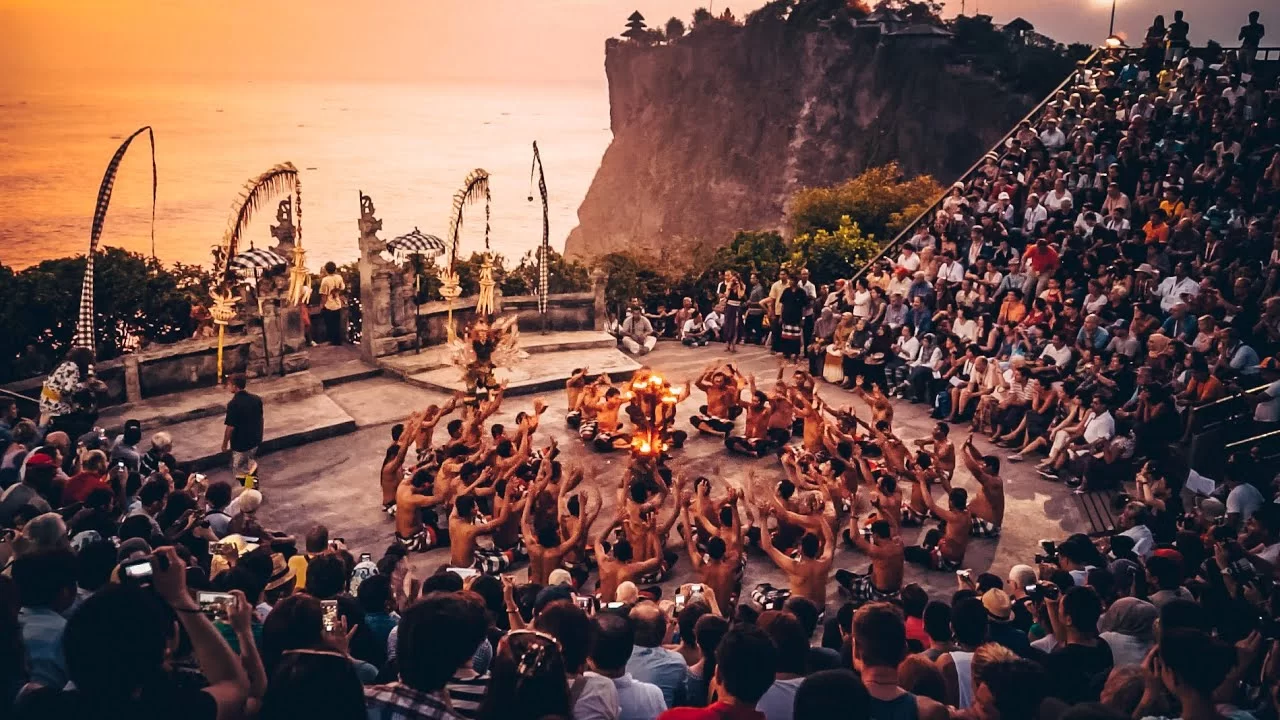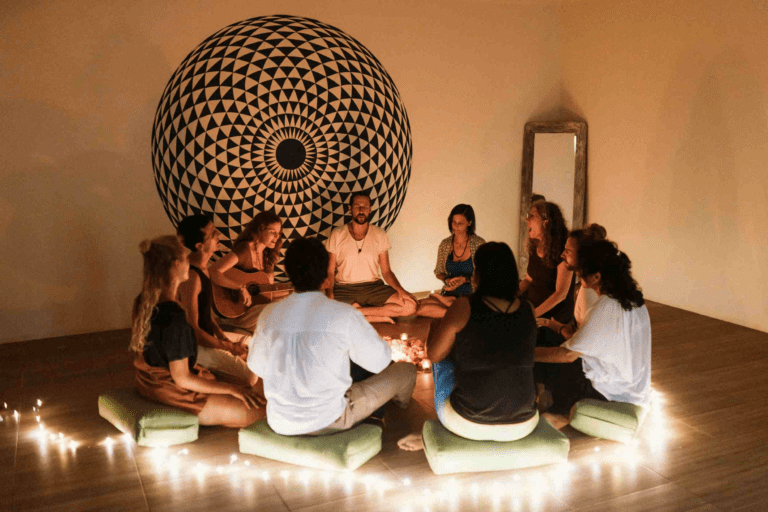Festivals and Cultural Events in Bali for Your 2025 Trip
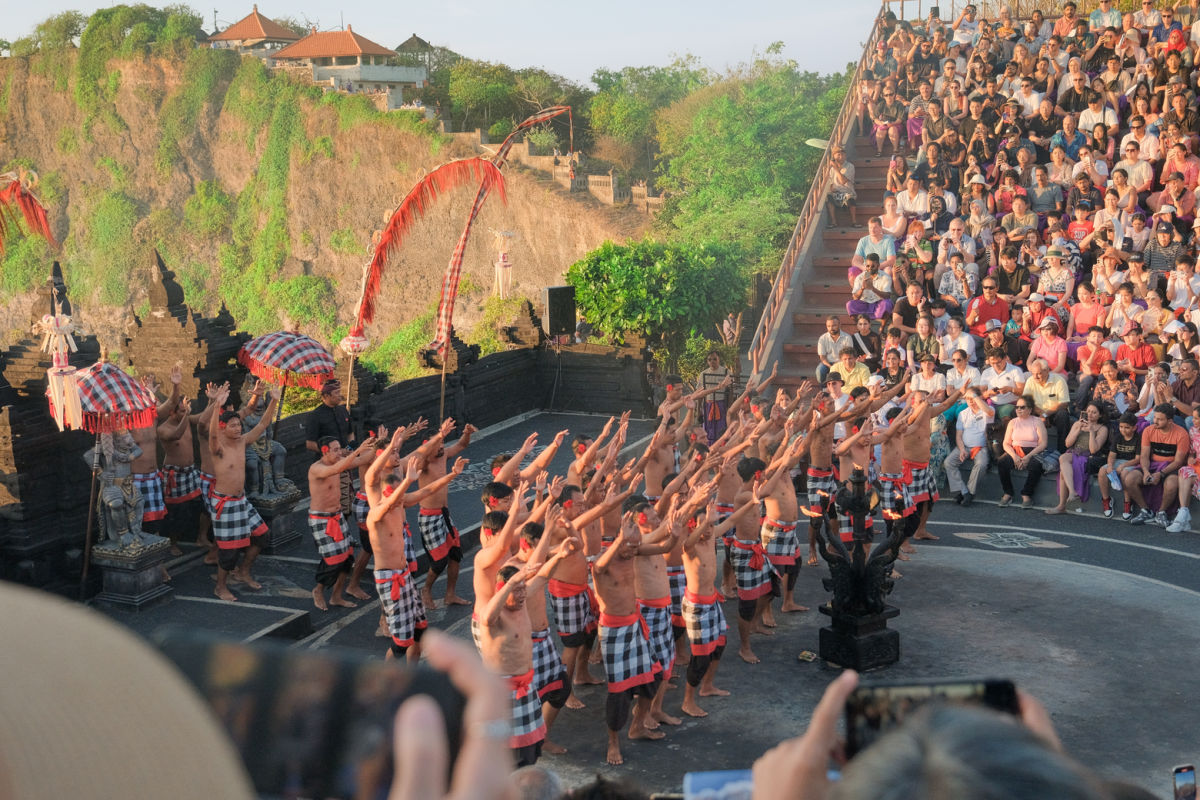
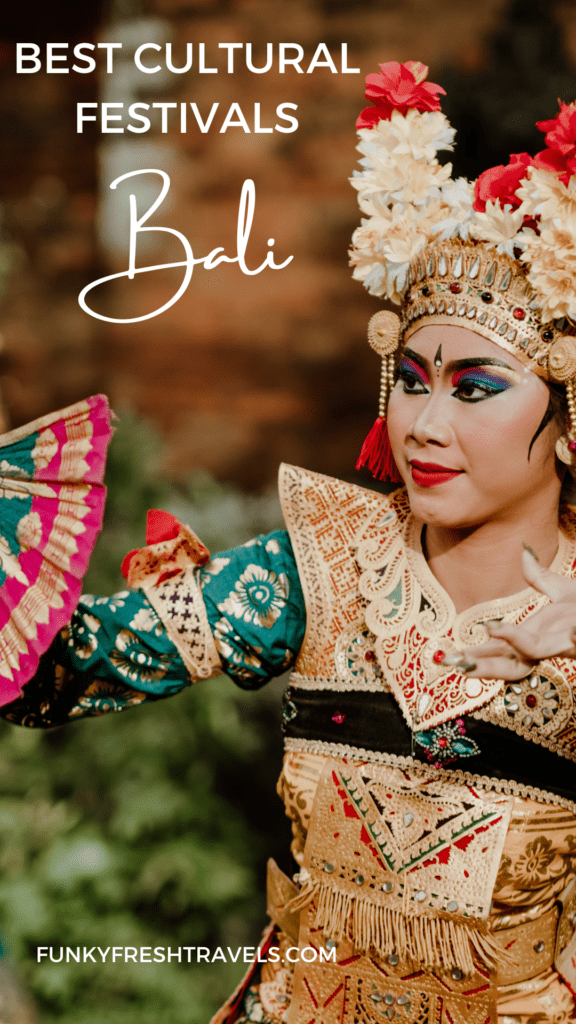
Greetings, fellow adventurers!
Have you ever wondered what makes Bali, an island in Indonesia, so unique?
According to the famous saying, “Every day is a journey, and the path itself is home.” The Japanese poet Basho’s wise words wonderfully reflect Bali’s spirit, where each day seems like an adventure and the experience feels like home.
Bali is more than simply a tourist destination; it’s a kaleidoscope of colourful events that invite visitors to get to know this alluring island’s heart and soul. Each occasion lends a fresh shade to the island’s cultural palette, from the Soundrenaline Festival to the Bali Arts Festival to distinctive regional traditions. So join us as we describe in plain, straightforward language the beauty, art, and the spirit of Bali’s festivals. A unique culture with various events spread through the year.

Looking for more information about Bali ?
- What to do in Bali with itinerary
- Best studios and yoga retreats in Bali
- Best sunset bars in Bali
- Best traditional food in Bali
- Best surf beaches in Bali
- Best meditation in Bali
Just type the topic you are looking for in the search bar

So much to do on the island of the gods: traditional dances, religious festivals, Balinese New Year, cultural events, music festival and musical performances with traditional music, special event, cultural parade, Bali Art Festival, Bali Blues Festival, all with a different theme, live performances, religious holidays celebrations. A wide variety of festivals with local people, best music, and ancestral spirits.
Best Festivals & Events in Bali
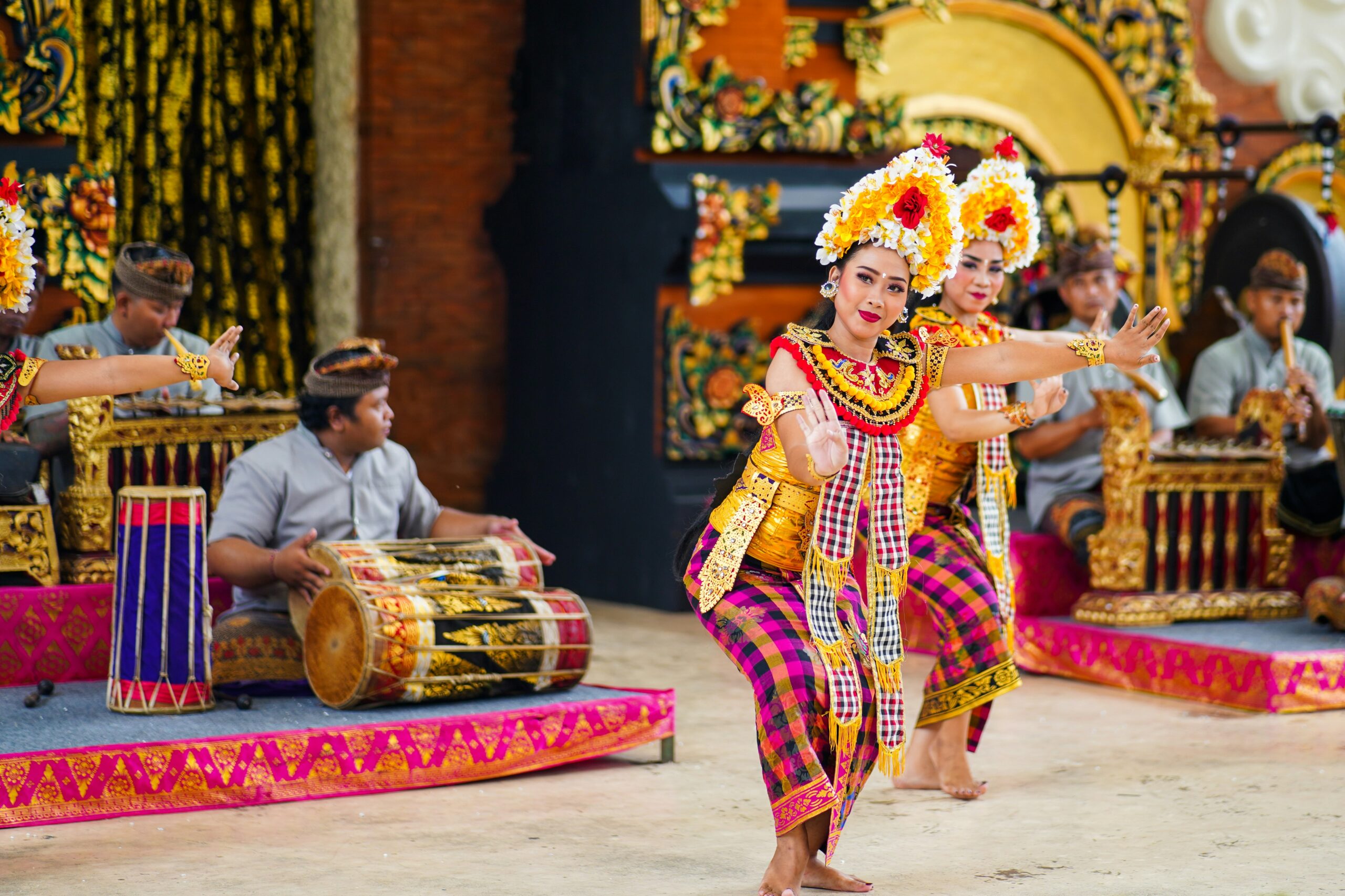
Don’t forget to check our full guide about 📍 Bali . Best food, restaurants, Yoga, Party and sunset drinks .
📍 Uluwatu 📍Canggu 📍Seminyak 📍Ubud 📍.
Just use the search function 🔎 on the website for the best results! Type here to search… Search
Events in Bali: A Deeper Dive into the Island’s Vibrant Culture
Bali, often dubbed the “Island of the Gods,” is a place where spirituality, art, and daily life are inextricably intertwined. This vibrant tapestry is most vividly displayed through its myriad of festivals and cultural events, offering visitors a unique window into the Balinese soul. Far from being mere tourist attractions, these celebrations are deeply rooted in the island’s rich traditions, spiritual beliefs, and the intricate rhythms of the Balinese calendar. Understanding these events provides a deeper appreciation for the island’s captivating allure, making your 2025 trip an unforgettable journey into the heart of Southeast Asia.
Looking for more information about Bali ?
A Celebration of Balinese Hindus

At the core of Bali’s cultural landscape lies the profound influence of Balinese Hinduism. Unlike the Hinduism practiced in India, Balinese Hinduism is a unique blend of Hindu, Buddhist, and ancient animist beliefs, creating a distinct spiritual path. This syncretic faith shapes nearly every aspect of life on the island, and its principles are beautifully expressed in the numerous cultural events that punctuate the year. The Balinese calendar, known as the Saka calendar (or Caka calendar) and the Pawukon calendar, dictates the timing of these important ceremonies. The Saka calendar, a lunar-solar calendar, is based on the movement of the moon and sun, while the Pawukon calendar is a 210-day cycle. This intricate system ensures a continuous cycle of offerings, purification rituals, and joyous celebrations, providing a spiritual rhythm that guides the lives of the Balinese people.
Bali Arts Festival: A Month-Long Extravaganza
The Bali Arts Festival (Pesta Kesenian Bali) is perhaps the most significant annual cultural event on the island, a dynamic celebration that skillfully combines art, culture, music, and dance performances to create a rich tapestry of sensations. Held annually from mid-June to mid-July, this month-long extravaganza showcases the island’s artistic prowess and heritage. It’s a location where you may immerse yourselves in a wide range of activities, including literary events, fashion shows, handicraft fairs, gastronomic pleasures, and much more. In essence, this annual event serves as a dazzling display of Bali’s rich cultural variety and creative talent, attracting hundreds of thousands of local and international visitors each year.

Attending the Bali Arts Festival is like entering a beautiful, living exhibition for art lovers. You may see Balinese Hindus dressed in their most alluring and ornate traditional garb on this live canvas. Their presentations, which feature ancient dance performances that portray interesting stories and legends, are nothing short of stunning. From the graceful legong and pendet dances to the powerful barong and rangda performances, each movement is imbued with spiritual significance and historical narrative. It’s as though history is being brought to life via beautiful, captivating motions, preserving ancient traditions for future generations.
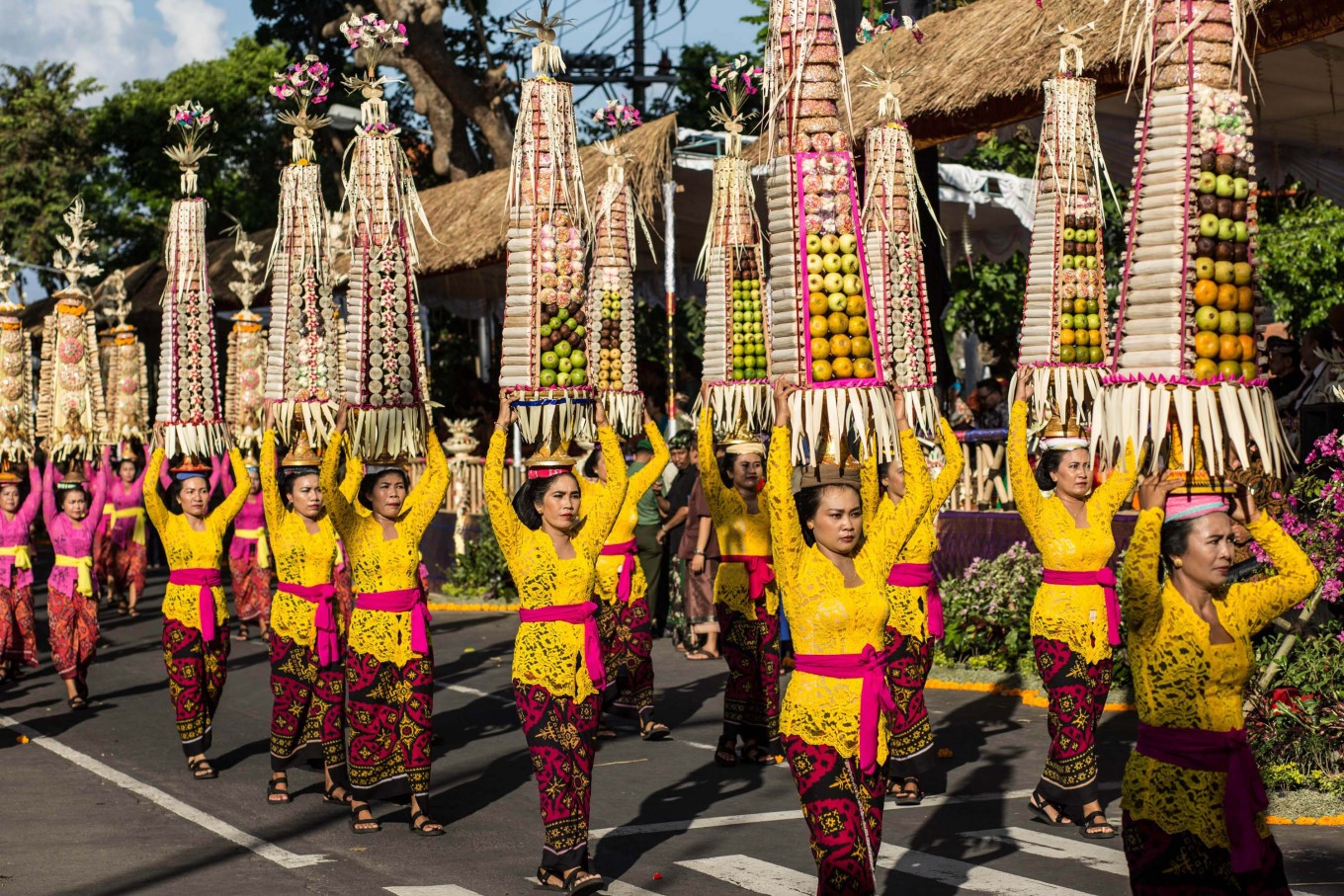
Those who enjoy photography are also in for a tremendous treat. The event is a feast for the eyes with a riot of hues, patterns, and intricacies that make for fantastic photo opportunities. The vibrant costumes, the intricate details of the offerings, the expressive faces of the dancers, and the lively atmosphere create countless moments to capture. The culture, people, and artistic talent on the show are potentially captured in every nook and cranny of the event, providing a truly immersive experience for anyone seeking to delve deeper into Balinese artistry. Beyond the main performances, the festival also hosts competitions in traditional music, crafts, and culinary arts, fostering healthy competition and encouraging the continued evolution of Balinese creative expression.
Bali Kite Festival: Soaring Traditions
The mesmerising Bali Kite Festival (Pesta Layang-Layang) is a spectacle that demands particular mention and is often held concurrently with, or shortly after, the Bali Arts Festival, typically between July and October. Imagine this: Kites of different sizes and shapes are flying in the sky, each one more vibrant and inventive than the last. Not only are kites flown, but there is also an informal contest to see who can make the most amazing and distinctive ones. These giant, traditional kites, often reaching several meters in length, are crafted by village teams (banjar) and represent various symbolic figures, from fish and birds to mythological creatures.
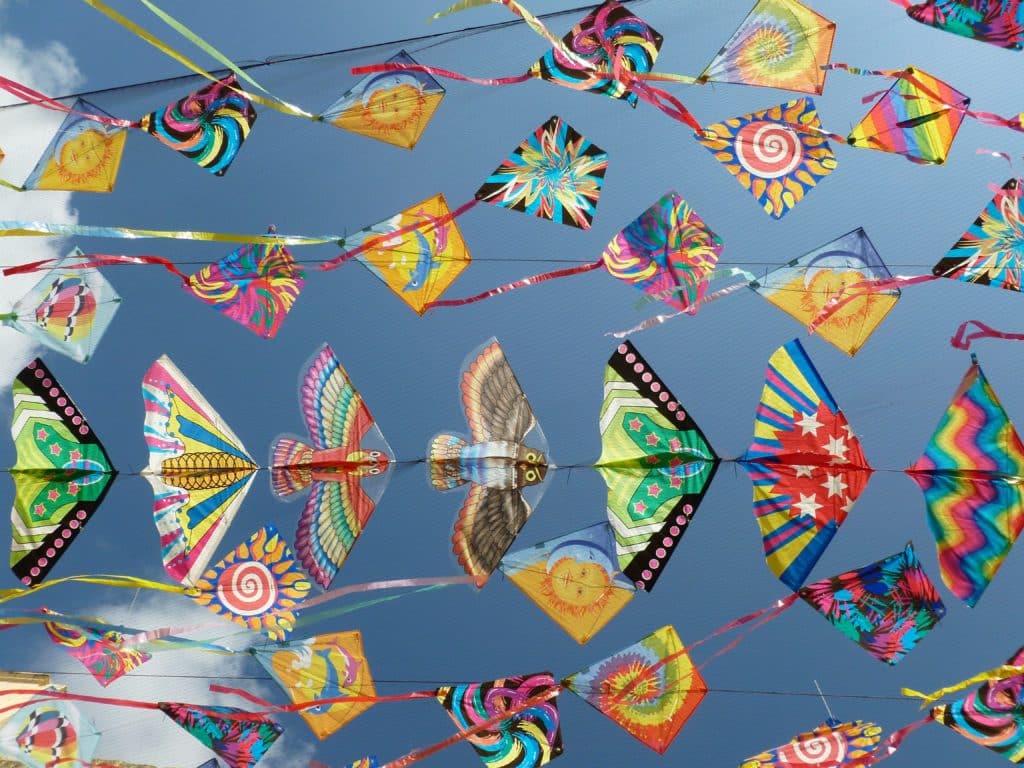
The intricate designs and vibrant colors are a testament to the Balinese people’s artistic flair. The enthusiasm and excitement in the air are contagious, and it is quite spectacular to see these kites soar high in the sky, often accompanied by the distinct sound of a traditional bamboo bow attached to the kite, creating a haunting melody carried by the wind. The originality and excitement of the Balinese Hindus will wow you in this must-see segment of Bali’s summer festival features. This festival isn’t just a competition; it’s a profound cultural statement, a communal effort to appease the gods and ensure good harvests, emphasizing the strong connection between the Balinese people and their natural environment.
Bali Spirit Festival: A Harmony of Wellness
A unique aspect of the festivities is the Bali Spirit Festival. Unlike the more traditional cultural events, this festival, usually held in March or April in Ubud village, is a global gathering focused on yoga, dance, and music. It’s a serene, enlightening encounter, attracting thousands of participants from around the world. Yoga classes are available, offering a diverse range of styles and workshops led by renowned international instructors.

You may dance while listening to lovely music, with performances ranging from traditional Balinese gamelan to contemporary world music, often incorporating elements of southeast asian sounds. It’s a great opportunity to feel the positive vibe at this unique annual festival features and connect with your inner self, fostering a sense of community and conscious living. The festival champions environmental awareness and social responsibility, making it a holistic experience that nourishes the body, mind, and spirit. Traditional clothing and music performances are often integrated, showcasing the blend of local culture with global wellness trends.
Canang Sari: Daily Devotion
Although Canang Sari is a little celebration, it is extremely significant in Balinese Hindu tradition. People carry it out every day. In order to express their gratitude and love to the gods, they make these lovely gifts with fruit, flowers, rice, and incense. Additionally, they plead for harmony and peace on Earth. These offerings may be seen all around the island, including in front of residences, shops, beaches, temples, and marketplaces.

They don’t just pick random items to put in the offerings. Each one has a unique purpose, whether it is honoring particular Hindu gods or symbolizing other things. The delicate artistry involved in crafting each canang sari, often by hand, speaks volumes about the deep devotion and reverence of the Balinese people. This daily ritual, performed by women and men alike, is a constant reminder of the spiritual connection that permeates every aspect of Balinese life, a small yet profound cultural event that happens continuously.
Don’t forget to check our full guide about 📍 Bali . Best food, restaurants, Yoga, Party and sunset drinks .
📍 Uluwatu 📍Canggu 📍Seminyak 📍Ubud 📍.
Just use the search function 🔎 on the website for the best results! Type here to search… Search
Nyepi: The Day of Silence
A unique religious celebration called Nyepi, or “Day of Silence,” is celebrated in Bali. To commemorate the beginning of a new year, it is observed on the 12th New Moon according to the Balinese calendar (Saka calendar), typically in March or April. Several thrilling events take place before Nyepi Day, but the Ogoh Ogoh Parade is the most exciting one, usually held on the eve of Nyepi.
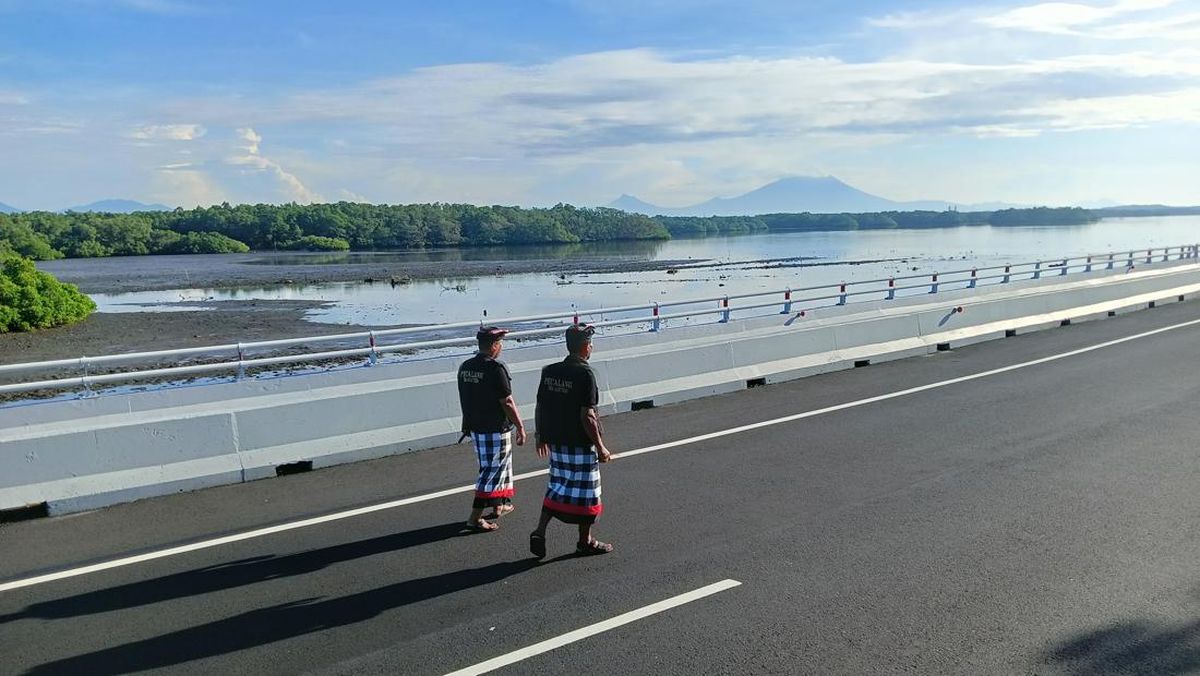
During the Ogoh Ogoh Parade, participants carry enormous, terrifying sculptures known as ogoh ogohs. These intricately crafted effigies, often several meters tall, depict demons, evil spirits, and mythological creatures. They fire the ogoh ogohs after marching through the streets to loud gamelan music and boisterous chants, creating a cacophony designed to attract and then dispel malevolent forces. This burning serves as a signal for evil spirits and other negative elements from the previous year to leave, purifying the island for the new year. Following the parade, friends and relatives join together to celebrate all night long while eating delicious cuisine, preparing for the profound silence to come.
The major annual event of the celebration is now Nyepi Day itself. Since it is a public holiday, the entire island is closed for a full day, from 6 AM to 6 AM the following morning. The beaches have been closed, there are no aircraft (Bali’s Ngurah Rai International Airport is completely shut down), no cars (apart from emergencies), and even the lights are turned off or heavily dimmed, with no fires allowed. Restaurants and shops are also closed. In stark contrast to the regular Bali scene, the streets are now silent and deserted, creating an atmosphere of deep introspection and stillness. The local Pecalang (traditional Balinese security guards) ensure that these rules are observed.
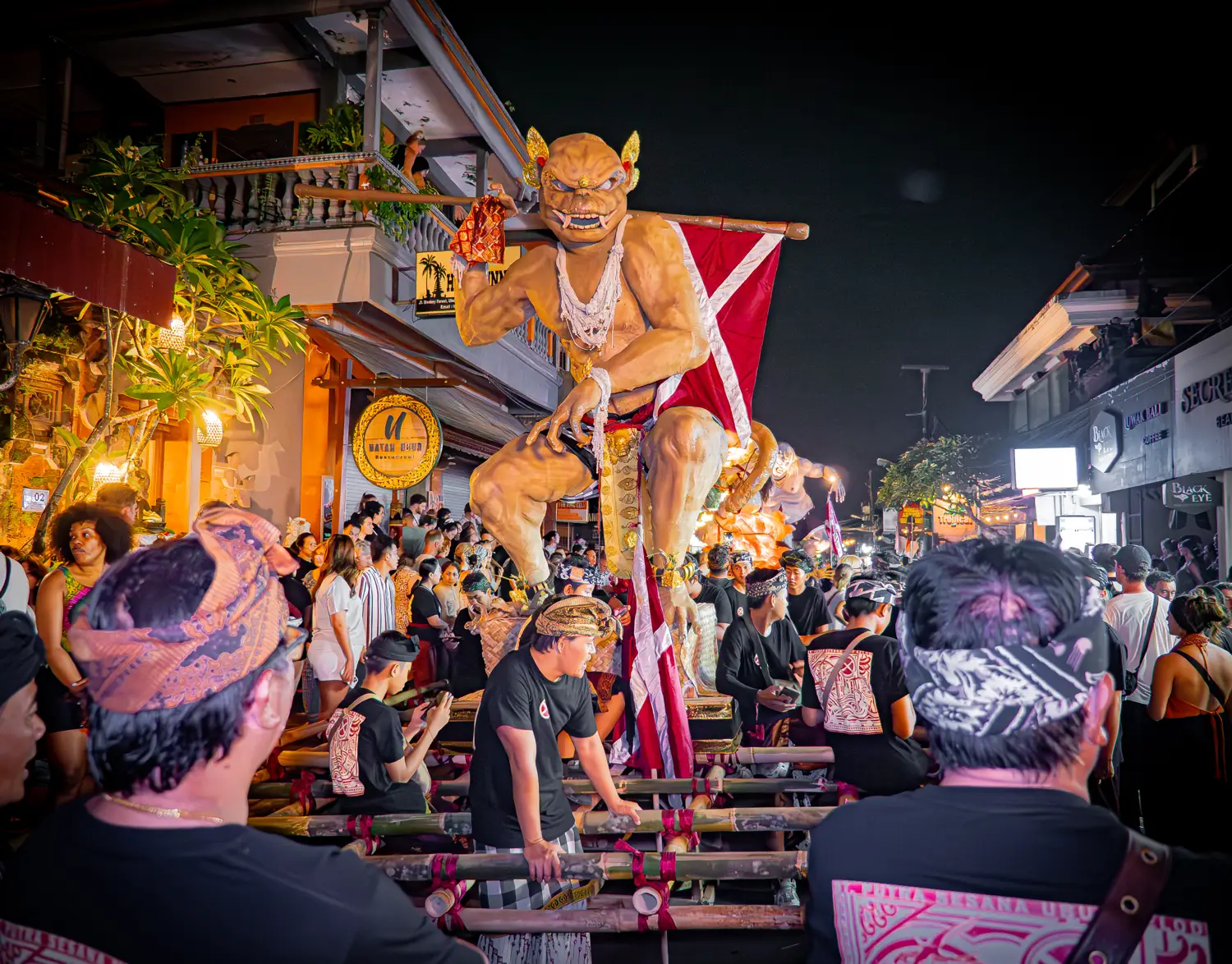
People may commune with their gods at this calm time and pray or meditate. It resembles a day of introspection and tranquillity, a collective spiritual cleansing. It’s a really distinctive experience in Bali and a unique way to begin the new year, offering a powerful opportunity for personal reflection and spiritual renewal amidst the otherwise bustling island life.
Omed-omedan: The Kissing Ritual
Omed-omedan, commonly known as “The Kissing Ritual,” is a special celebration held exclusively for single people between the ages of 17 and 30. Banjar Kaja (a traditional community unit) in Sesetan, Denpasar, typically experiences it the day following Nyepi, marking a joyous return to activity after the silence.
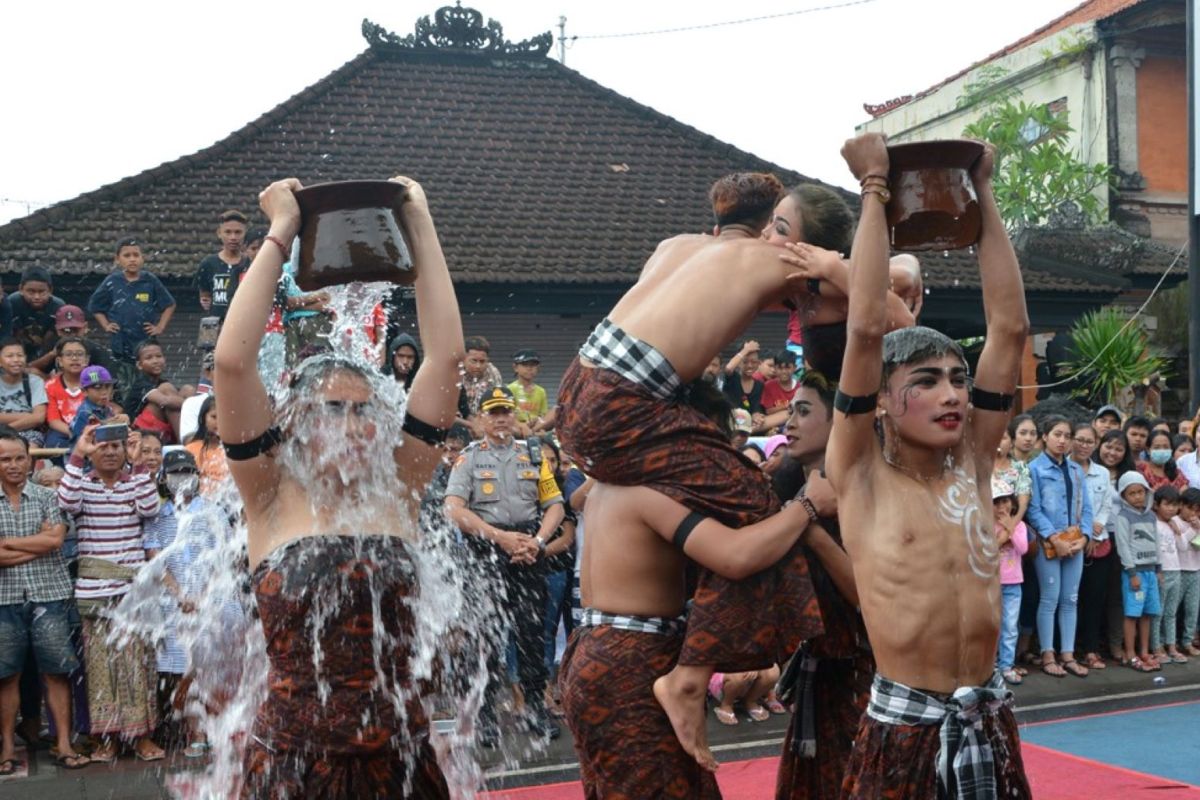
Everyone congregates at the shrine to offer up some prayers first, seeking blessings for the ritual. They divided into two groups at that point, one for the men and one for the ladies. These groups unite for a playful tug-of-war playfight that concludes with kisses and hugs from members of the opposite group, often accompanied by dousing with water. While this may seem a little out of the ordinary for a festival, the goal is to spread positivity and drive away negativity. It is thought to prevent negative things from happening, and ensure harmony and good fortune for the community. Furthermore, others claim it’s a terrific approach for young singles to find a particular someone, fostering connection and playful interaction within the community. This unique cultural event highlights the Balinese emphasis on communal well-being and the importance of banishing ill omens.
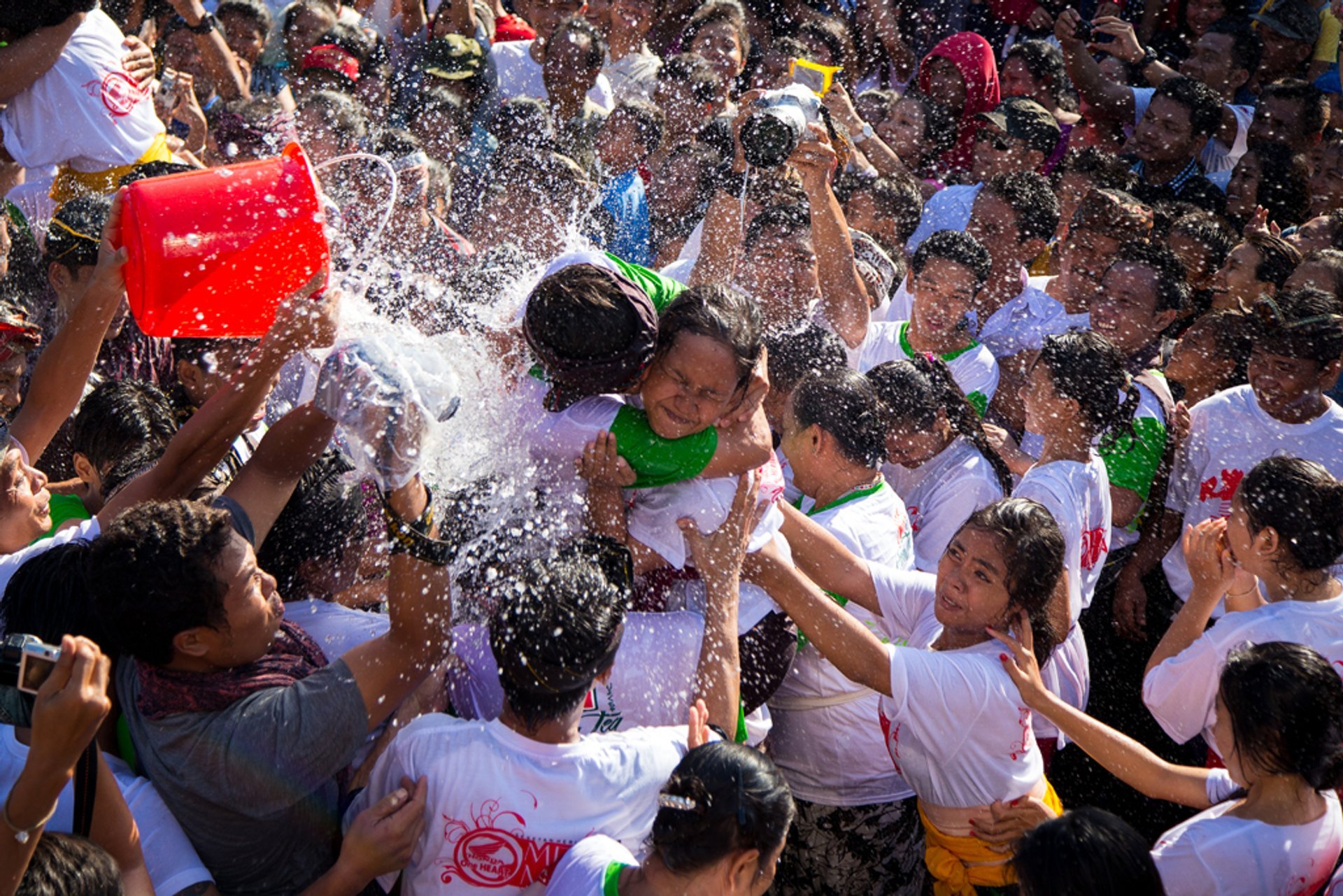
I wrote more than 70 articles about the Island of Bali : Bali on a budget , Is it safe to travel to Bali ? , Best temples in Bali , Cheapest time to visit Bali , Best waterfalls in Bali
Galungan: The Victory of Dharma
Every 210 days, according to the Pawukon Balinese calendar, the Hindu feast known as Galungan is celebrated in Bali. The Balinese people take great pride in commemorating the victory of Dharma (virtue) over Adharma (evil). This particular annual festival, which lasts for around ten days, has its own customs and enjoyable pursuits on each day, culminating in Kuningan, ten days later.
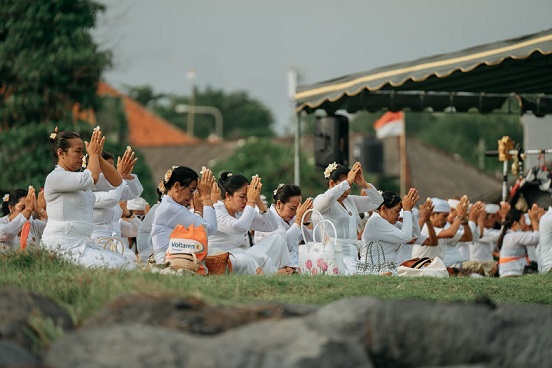
The idea that throughout Galungan, the distinction between our reality and the spirit realm gets a little hazy is quite interesting. It implies that the ghosts of our deceased ancestors may visit us, returning to their former homes. Now is the moment to treat them with respect, offering elaborate prayers and offerings.
These roving spirits go on the last day of Galungan (or rather, are escorted back to the spiritual realm on Kuningan). People put gifts at their houses to greet them, and large bamboo poles known as penjor are used to line the streets. These majestic, arching poles, often reaching over ten meters in height, are meticulously decorated with woven young palm leaves, flowers, fruits, and leaves, giving the streets a truly festive and artistic appearance, symbolizing the mountains and the blessings flowing from them.

Additionally, people visit temples, dress in their finest traditional attire (kebaya for women, sarung and udeng for men), and assemble with their families to partake in delicious feasts. It frequently contains elaborately cooked specialties like lawar (a mix of vegetables, coconut, and minced meat) and babi guling (roasted suckling pig), as well as various types of poultry. It’s a time to spend time with loved ones, pay respect to the past, and anticipate the future, reinforcing family bonds and spiritual devotion.
Don’t forget to check our full guide about 📍 Bali . Best food, restaurants, Yoga, Party and sunset drinks .
📍 Uluwatu 📍Canggu 📍Seminyak 📍Ubud 📍.
Just use the search function 🔎 on the website for the best results! Type here to search… Search
Layang-Layang: Kite Flying as a Sacred Art
The annual event of Layang-Layang (kite festival) takes place in southern Bali, often between July and October, coinciding with the windy season. There are much more connotations to flying kites than merely enjoying yourself. The kites represent the yin and yang energies of the universe as a balance, and their ascent to the sky is believed to carry messages and offerings to the gods. Balinese people hold that it is crucial to live in peace with the environment, and the act of flying kites is a form of communal prayer for good harvests and abundant blessings.

Kite flying is akin to communicating with the gods; it’s not only for pleasure. People enclose blessings and good harvest requests, with each village (banjar) competing to build the largest and most impressive kites, often depicting mythical figures like the giant bird Garuda or various fish and animal forms. Imagine gazing up into a sky filled with hundreds of kites of various sizes and forms, including animals and Hindu deities, often with long, melodious tails that hum in the wind. It’s an incredible sight, a vibrant display of communal artistry and spiritual devotion, a truly unique festival features that showcases the ingenuity of the Balinese people.
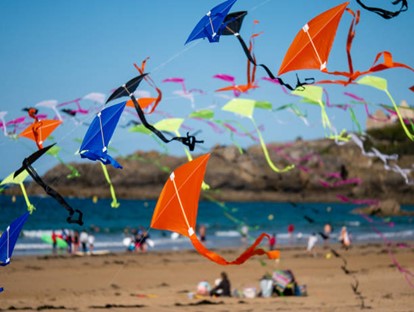
Indonesian Independence Day: A Nation’s Pride
Every August 17, Indonesian Independence Day (Hari Kemerdekaan Indonesia) is observed across the archipelago. This particular day commemorates the nation’s liberation from Dutch sovereignty in 1945, after centuries of colonial rule. It’s a significant event and an official public holiday in Indonesia, marked by patriotic fervor and nationwide celebrations. As a result, you’ll see numerous schoolchildren marching in events, flags fluttering in the air from homes and public buildings, vibrant kites soaring high (sometimes coinciding with the Layang-Layang season), and spectacular fireworks lighting up the night sky, especially in urban centers like Denpasar.

Across Bali, and indeed all of Indonesia, communities organize various competitions and games, from sack races and cracker-eating contests to climbing greased poles, all adding to the festive atmosphere. These activities foster a strong sense of national pride and unity. However, be prepared for some delays if you intend to travel throughout Bali on Independence Day or in the days leading up to it. It could take a little longer to get about because of how packed the streets can be with parades, flag-raising ceremonies, and community gatherings.
Maybank Bali Marathon: Running Through Paradise
A very well-known running competition, the Maybank Bali Marathon, debuted in 2012. It has grown in importance on the global running scene, attracting both elite athletes and recreational runners. More than 10,000 athletes from 46 different nations registered to participate in recent editions, showcasing its international appeal. It’s so awesome, in fact, that Runners World journal named it one of “The 52 Best Events on Earth,” a testament to its unique blend of challenging terrain and stunning scenery.

Visitors to Bali who enjoy running have the choice of participating in one of four events: kids’ races, 10k runs, half marathons, and full marathons. The greatest part is that you can take in stunning vistas of Bali’s Gianyar and Klungkung areas while you run, complete with their picturesque rice farms, traditional villages, and undulating hills, offering a truly immersive experience of the island’s natural beauty.
You’ll get to see Balinese culture along the road, which makes this marathon even more unique. To support you, communities nearby put on cultural events, dance performances, and other events, cheering on the runners with traditional music and enthusiastic encouragement. It’s a great approach to learning about the manner of life there, providing a glimpse into the warmth and hospitality of the Balinese people.
So why not participate in the Maybank Bali Marathon if you’re going to be in Bali in September (the usual month for the event)? It’s more than just a race; it’s an opportunity to take part in something incredible and enjoy Bali’s natural beauty at the same time, combining physical challenge with cultural immersion.
Soundrenaline: Bali’s Premier Music Extravaganza
Bali’s Soundrenaline is a wonderful treat for music enthusiasts. It’s not your normal music event; this one. It has been around for a while (since 2002) and draws a lot of attention each year, establishing itself as one of Indonesia’s largest and most anticipated music festivals.

Rock out to many genres of music at Soundrenaline, including jazz, hip-hop, indie, and others. It resembles a sizable concert with both well-known and upcoming Indonesian musicians, as well as a growing number of international acts. If you enjoy music, this fantastic annual event is guaranteed to have something you will enjoy, offering diverse stages and a vibrant atmosphere. It’s a terrific excuse to return year after year for extra enjoyment, experiencing the cutting edge of Indonesian and international music in a stunning island setting. This is a must-attend for anyone looking for a dynamic music festival features in Southeast Asia.
Don’t forget to check our full guide about 📍 Bali . Best food, restaurants, Yoga, Party and sunset drinks .
📍 Uluwatu 📍Canggu 📍Seminyak 📍Ubud 📍.
Just use the search function 🔎 on the website for the best results! Type here to search… Search
Beyond the Major Events: More Cultural Gems
While the festivals mentioned above are some of the largest and most well-known, Bali’s Balinese calendar is brimming with countless other cultural events and smaller, equally significant celebrations.
Ubud Village Jazz Festival

For jazz aficionados, the Ubud Village Jazz Festival is a captivating annual event, typically held in August. Set amidst the lush greenery of Ubud village, this festival brings together talented local and international jazz musicians for intimate and vibrant performances. It’s a testament to Ubud’s growing reputation as a hub for arts and culture, offering a sophisticated counterpoint to the larger music festivals.
Ubud Food Festival

Food lovers rejoice at the Ubud Food Festival, usually held in April. This highly anticipated cultural event showcases the incredible diversity of Indonesian cuisine, with a particular focus on Balinese culinary traditions. Featuring cooking demonstrations, workshops, food stalls, and discussions with renowned chefs, it’s a sensory feast that delights the palate and expands culinary horizons.
Ubud Writers & Readers Festival

Another jewel in Ubud’s crown is the Ubud Writers & Readers Festival, generally held in October. This internationally acclaimed literary cultural event brings together writers, thinkers, and artists from around the globe to engage in discussions, workshops, and readings. It’s a platform for exploring diverse perspectives, fostering intellectual exchange, and celebrating the power of storytelling. The festival features a mix of established literary figures and emerging voices, making it a vibrant and inspiring gathering for anyone passionate about literature and ideas.
Sanur Village Festival
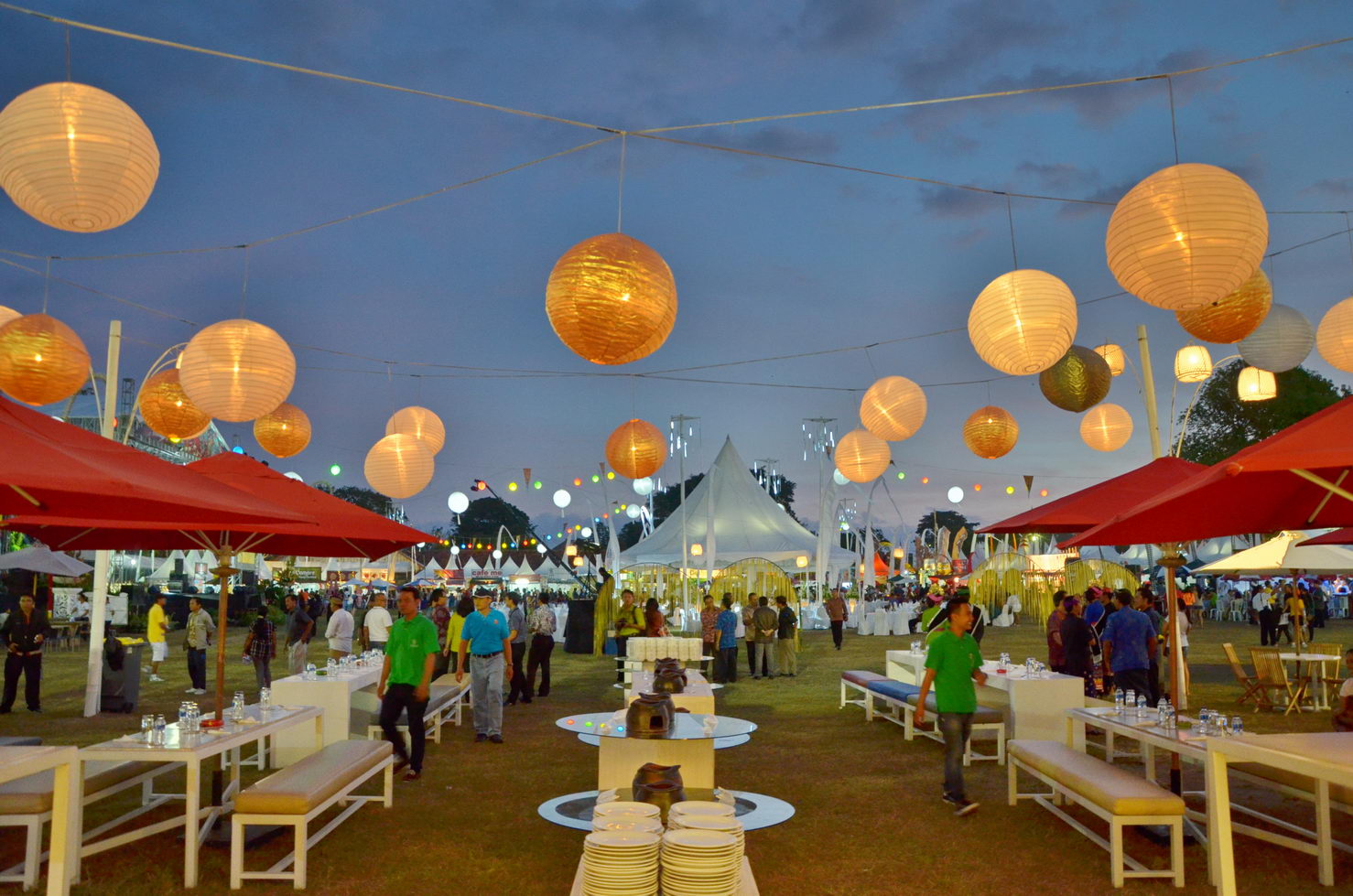
Held annually in August, the Sanur Village Festival is another popular cultural event that offers a delightful blend of art, food, music, and environmental awareness. This multi-faceted festival showcases the charm of Sanur, a quieter coastal town, with events ranging from culinary bazaars and fashion shows to sports competitions and environmental campaigns. It often features traditional dance performances, live music, and kite flying, making it a family-friendly event with a strong community spirit.
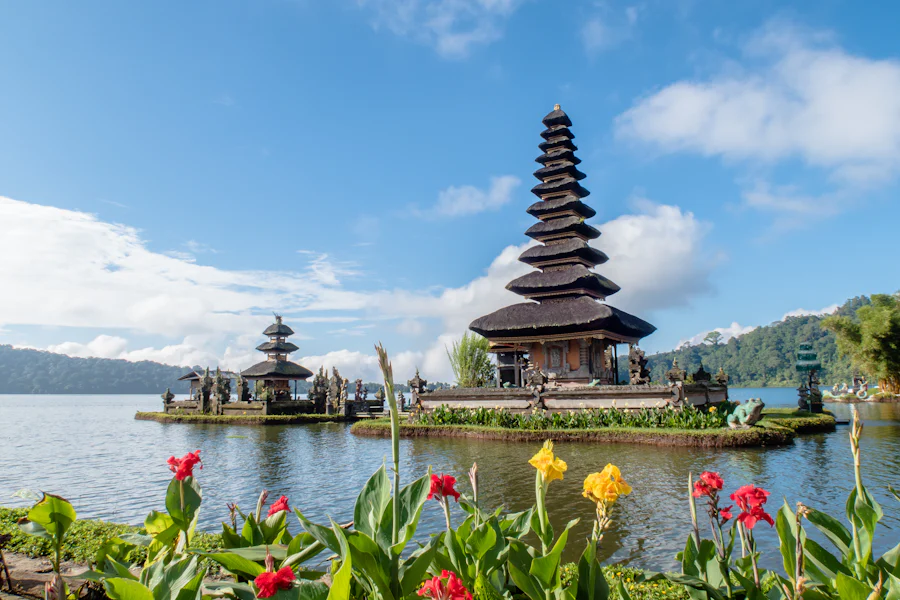
Conclusion
Bali is a wonderful location with a wide variety of things to do and enjoy. This island certainly understands how to appreciate its culture and engage it with everyone, from the Bali Arts Festival to distinctive customs like Omed-omedan and Layang-Layang. The intricate Balinese calendar and Saka calendar ensure that there is always a cultural event to experience, deeply rooted in the island’s unique spiritual beliefs.
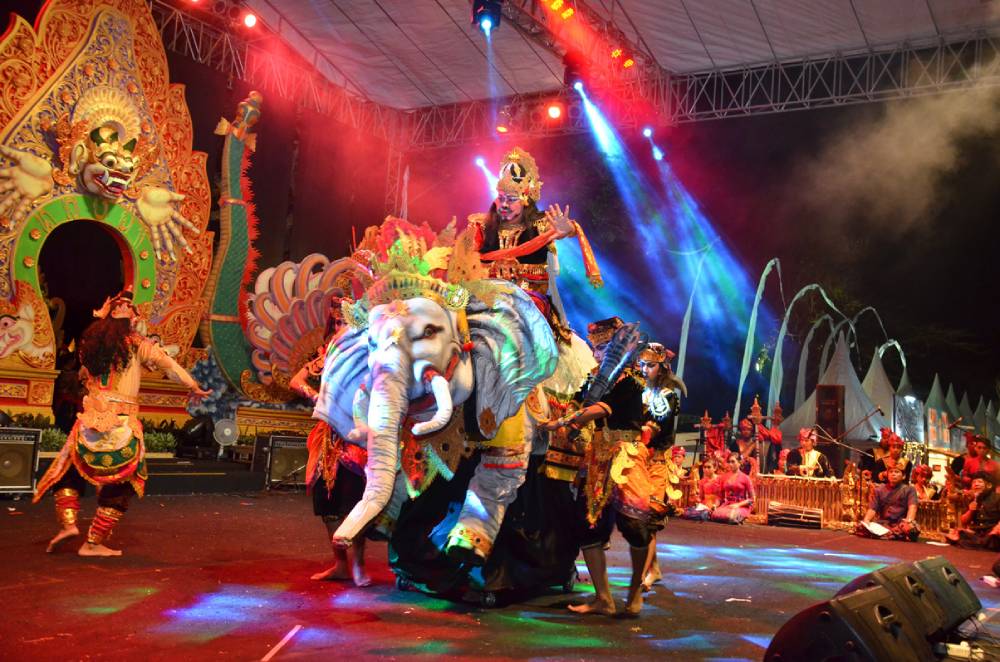
There are reflective occasions like Nyepi, joyous occasions like Galungan, and momentous occasions like Indonesian Independence Day and the Maybank Bali Marathon. The focus is on showcasing Bali’s many aspects, from its ancient traditions and vibrant dance performances to its thriving contemporary arts scene, as seen in the Ubud Village Jazz Festival, Ubud Food Festival, and Ubud Writers & Readers Festival. For music lovers, Soundrenaline is similar to a large party with a wide variety of songs, while the Sanur Village Festival offers a diverse community celebration.
Each annual festival on the island of Bali gives visitors the chance to experience the island’s distinctive culture and its myriad festival features. Therefore, Bali has a beautiful celebration ready for you to engage in if you’re considering travelling there in 2025. Come and take part in Bali’s culture’s charm, and immerse yourself in the enchanting spirit of Southeast Asia‘s most captivating island.
Want to know more about Bali ? What to do in Bali ? , Best beach clubs in Bali , Best traditional food Bali , Best beaches Bali , Best diving Bali

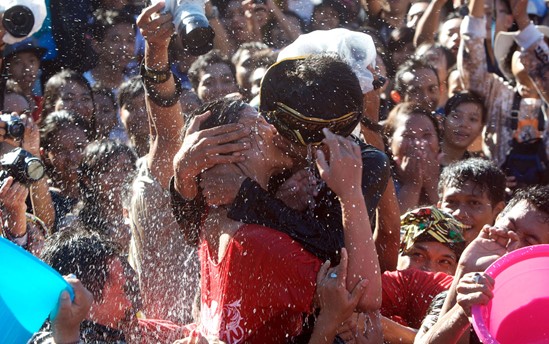
I wrote more than 70 articles about the Island of Bali :
Bali on a budget , Is it safe to travel to Bali ? , Best temples in Bali , Cheapest time to visit Bali , Best waterfalls in Bali , and more!

WHO AM I ?
Hello !
I am Eric, a French Australian citizen based between Australia, Asia and Bali an I love to travel and experience the world. I generally like outdoor activities, wellness, great food and venues , party and real local adventures ! I am a Yoga practitioner and fitness lover
I created this blog because I love to travel and I want to share my experiences with others. I’ve been traveling since I was a child, and I’ve been to over 50 countries. I’ve seen some amazing things and met some amazing people, and I want to help others experience the same things.
I believe that travel is one of the best ways to learn about the world and about yourself. When you travel, you’re forced to step outside of your comfort zone and experience new things. You learn about different cultures, different religions, and different ways of life. You also learn about yourself, your strengths, and your weaknesses.

Uyuni Salar, Boliva
Let’s connect together !
I hope that my travel blog will inspire others to travel and to see the world. I also hope that it will help people to learn about different cultures and to become more open-minded.
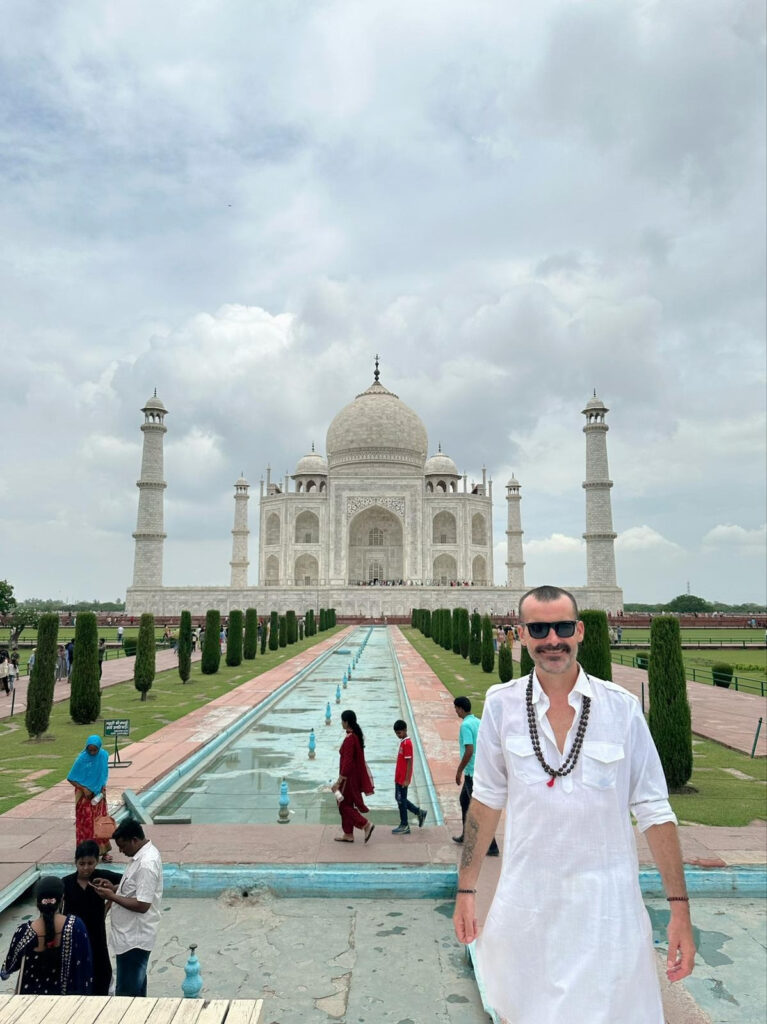
Taj Mahal, Agra, India

